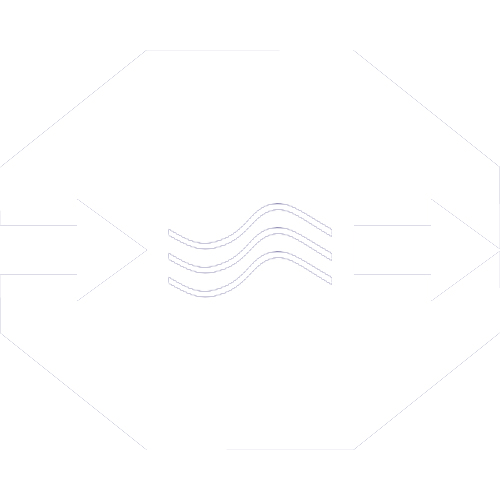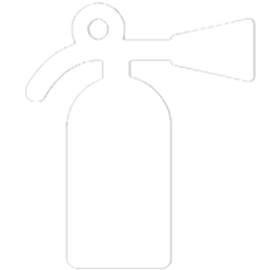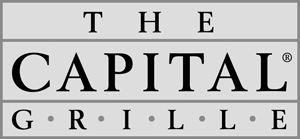Understanding NFPA 90A Compliance
From bustling beachside cafés to fine-dining establishments in the heart of Orlando, Florida is home to a dynamic, thriving restaurant scene. In such a high-demand environment—where cooking equipment runs hot for long hours—it’s critical to have a ventilation system that is both effective and code-compliant. That’s where NFPA 90A (Standard for the Installation of Air-Conditioning and Ventilating Systems) comes into play.
Although NFPA 90A covers a wide array of ventilation topics, this article will focus on the duct detector requirements, smoke and carbon monoxide (CO) detectors, and hood maintenance best practices relevant to Florida’s restaurant industry. By adhering to these guidelines—and also cross-referencing related NFPA and Florida Fire Prevention Code standards—you’ll ensure a safe and efficient ventilation setup that not only meets local code but also protects your patrons and staff from fire, smoke, and hazardous gases.
1. Why NFPA 90A Matters for Florida Restaurants
1.1 Scope of NFPA 90A
NFPA 90A is the Standard for the Installation of Air-Conditioning and Ventilating Systems, issued by the National Fire Protection Association. While it primarily addresses the design and installation of HVAC (Heating, Ventilation, and Air Conditioning) systems, certain sections are particularly relevant to restaurants, where:
- Grease-laden vapors from cooking can accumulate in ducts.
- Exhaust hoods must channel high volumes of heated air and possible smoke outside.
- Potential fire hazards can spread quickly if ductwork and fans aren’t properly configured.
1.2 Florida Fire Prevention Code (FFPC) and Building Code Integration
The Florida Fire Prevention Code (FFPC) adopts numerous NFPA standards, including NFPA 90A, often with state-specific amendments. Meanwhile, the Florida Building Code (FBC) references these same guidelines for mechanical system installations. As a restaurant owner or construction professional, understanding how NFPA 90A weaves into FFPC and FBC requirements prevents costly reworks or code violations.
1.3 The High Stakes of Poor Ventilation
Insufficient or poorly designed ventilation can lead to:
- Smoke accumulation in the kitchen or dining area, causing discomfort or even respiratory hazards for guests.
- Elevated carbon monoxide levels if gas-fired appliances or engines don’t vent properly.
- Fire risk, as grease builds up in ductwork, potentially leading to flash fires that can spread into the ceiling, attic, or other building areas.
By following NFPA 90A for duct and hood requirements—and integrating proper smoke and CO detectors—you minimize these risks, creating a safer, more pleasant environment for everyone.
2. Duct Detector Basics Under NFPA 90A
2.1 What Are Duct Detectors?
A duct smoke detector is a device installed inside or downstream of HVAC ducts to sense smoke traveling through the ventilation system. When smoke is detected, the sensor triggers an alarm or controls that can:
- Shut down HVAC fans to prevent smoke from circulating throughout the building.
- Activate emergency controls or signals to a fire alarm panel.
- Alert occupants and staff to potential fire conditions.
2.2 When Are Duct Detectors Required?
While exact requirements may differ by local amendments or occupant load, NFPA 90A generally mandates duct detectors in large or critical HVAC systems, including:
- Systems that exceed a certain airflow capacity (commonly around 2,000 cubic feet per minute, or CFM).
- Return air systems in commercial or assembly occupancies (like restaurants) to detect if smoke is being drawn back into recirculation.
- Multi-story buildings, ensuring that smoke doesn’t migrate from one floor to another through the ductwork.
In Florida, duct detectors may also tie into local fire alarm systems or the Florida Building Code’s mechanical chapters, which specify additional thresholds or location rules. Always check with your local Authority Having Jurisdiction (AHJ) to clarify whether your specific restaurant needs duct detectors.
2.3 Proper Installation and Access
Duct detectors must be:
- Accessible: Installation should allow for testing, cleaning, and replacement without dismantling major duct sections.
- Positioned Correctly: Ideally in straight runs of duct, not immediately near fans, bends, or dampers, which can cause airflow turbulence.
- Powered Safely: Tied to dedicated power circuits or backup systems, ensuring they remain active during emergencies or power losses.
2.4 Interlocking Systems
A key aspect of NFPA 90A is its emphasis on interlocks. When a duct detector senses smoke, the standard typically requires the associated air handler or HVAC fan to shut down or close dampers, preventing smoke from spreading. Some Florida jurisdictions also require direct notifications to fire alarm panels, enabling first responders to locate the issue quickly.
3. Smoke and Carbon Monoxide (CO) Detectors in Restaurant Ventilation
3.1 Smoke Detectors Beyond the Ductwork
While duct detectors target smoke within ventilation shafts, additional smoke detectors may be required in:
- Kitchens (though these can be prone to nuisance alarms if improperly placed near cooking appliances).
- Dining areas or corridors, especially if the occupant load is above certain thresholds.
- Mechanical rooms housing HVAC equipment or gas-fired boilers.
NFPA 101 (Life Safety Code) and the Florida Fire Prevention Code often detail the placement and spacing of smoke detectors. Proper selection (ionization, photoelectric, or dual-sensor) can help reduce nuisance alarms while still ensuring reliable fire detection.
3.2 The Danger of Carbon Monoxide
Carbon monoxide (CO) is an odorless, colorless gas produced by incomplete combustion in gas or propane-fired equipment. Restaurants using gas-fired ovens, stoves, or water heaters risk CO buildup if:
- Ventilation is blocked or insufficient.
- Heat exchangers are cracked or damaged.
- Exhaust fans malfunction, causing backdrafting.
Florida’s humidity and high temperatures can exacerbate poor indoor air quality if ventilation isn’t meticulously maintained. Although NFPA 90A doesn’t exclusively cover CO detectors, other codes (like NFPA 720, now integrated into NFPA 72) or local Florida amendments frequently require them, particularly in occupancies with sleeping areas or high occupant loads. Still, it’s increasingly common for AHJs to encourage or mandate CO detectors in large commercial kitchens and mechanical rooms.
3.3 Integration with Fire Safety Systems
Smoke and CO detectors often tie into the broader fire alarm or building management system:
- Central Alarm Panel: Receives signals from detectors, initiating occupant notification and possible fan shutdowns or gas valve closures.
- Monitoring Services: Larger restaurants in Florida tourism spots may have 24/7 monitoring for immediate emergency response.
4. Exhaust Hood Requirements: Addressing Grease and Heat
4.1 NFPA 96 vs. NFPA 90A
While NFPA 90A sets general ventilation standards, NFPA 96 focuses on commercial cooking ventilation, specifically grease-laden vapor removal. Yet, Florida restaurants often have both sets of requirements to satisfy—particularly if the HVAC system also handles dining area air or ties into the kitchen makeup air supply.
The kitchen exhaust hood is your first line of defense, capturing and venting:
- Grease
- Heat
- Smoke
- Steam
Failure to maintain these hoods properly can lead to grease buildup, intensifying the risk of duct fires and hampering airflow. Always confirm with your local AHJ whether a given hood or duct system primarily follows NFPA 96 or if certain elements also fall under NFPA 90A coverage (for example, connecting duct sections in non-grease areas).
4.2 Hood Types and Configurations
Depending on your menu and cooking volume:
- Type I Hoods: Required for operations producing grease-laden vapors (frying, grilling). Must have a fire suppression system and follow stricter design guidelines.
- Type II Hoods: For non-grease heat and moisture (baking ovens, steamers). Typically no built-in fire suppression is required, but adequate airflow and duct design remain crucial.
Florida building departments might require a mechanical plan review to confirm correct hood type, ensure proper placement, and verify that duct runs comply with both NFPA 90A and NFPA 96.
4.3 Makeup Air and Balanced Ventilation
Makeup air replaces the air exhausted by kitchen hoods, preventing negative pressure in the building. Negative pressure can draw in unconditioned (hot, humid) Florida air or pull cooking fumes into dining areas. NFPA 90A addresses how air handling units (AHUs) and ducts should integrate with kitchen hoods to achieve balanced airflow:
- Supply Ducts should introduce air near or within the kitchen, but not so forcefully that they disrupt cooking appliance performance or push smoke into the dining area.
- Exhaust Volume must match or slightly exceed supply air to contain grease-laden vapors, ensuring they flow toward the hood rather than escaping through doorways or windows.
A well-balanced system also helps control CO levels, as proper ventilation ensures any combustion byproducts are exhausted, reducing the risk of buildup.
5. Duct and Hood Maintenance: A Critical Component of Safety
5.1 Grease Buildup: The Fire Hazard
Grease accumulation in hoods and ducts is a major cause of restaurant fires. Even if you’ve installed a code-compliant ventilation system, ignoring maintenance can have devastating consequences. Over time, the combination of heat, grease vapors, and oxygen can create a flash fire that rapidly spreads beyond the kitchen into duct runs.
5.2 NFPA 96 Cleaning Requirements
Although this article focuses on NFPA 90A, Florida restaurants must also comply with NFPA 96 for the regular cleaning of grease ducts and hoods:
- Monthly or Quarterly: High-volume cooking or operations using deep fryers, charbroilers, or woks.
- Semiannually: Moderate-volume establishments.
- Annually: Low-volume or seasonal operations.
Ignoring these intervals can lead to code citations, forced closures, or worse—catastrophic fires. Florida’s humidity and high cooking demands often mean more frequent cleanings or spot checks are needed, even if your code cycle suggests a longer interval.
5.3 Duct Detector and Hood System Testing
Proper maintenance involves more than just cleaning out grease:
- Test Duct Detectors: Ensure they respond accurately to smoke or high heat within the HVAC or exhaust duct.
- Check CO Detectors: Replace batteries (if standalone) or confirm the device remains functional and properly calibrated.
- Inspect Fan Motors and Belts: Overstressed motors or loose belts can reduce airflow, leading to inefficiency or backdrafts.
- Verify Fire Suppression Nozzles and Fusible Links: Ensure your built-in fire suppression (often required under NFPA 17A or 96) is unobstructed and properly aligned.
Maintaining thorough records of each inspection—who performed it, what was found, corrective actions—provides a solid defense against any liability claims and satisfies the AHJ during surprise inspections.
6. Florida-Specific Code Adoptions and Local Amendments
6.1 The Florida Fire Prevention Code (FFPC)
The FFPC integrates NFPA 1 and NFPA 101, referencing NFPA 90A for HVAC systems. Florida often adds local amendments to address:
- High humidity or tropical storm concerns.
- Tourism-based occupancy surges.
- Unique building designs along coastlines, factoring in hurricane codes for roof-mounted HVAC units.
6.2 County and City Regulations
Each county or city in Florida can further modify or interpret NFPA 90A. Some local fire departments might require:
- Duct detectors for smaller airflow capacities than NFPA 90A’s standard thresholds.
- Enhanced smoke or CO detection in busy tourist corridors or near hotels.
- Shorter cleaning intervals for grease ducts due to local fire data trends.
Restaurant owners should always consult the local building or fire department early in the design or renovation phase.
7. Common Pitfalls and Compliance Tips
7.1 Oversizing or Undersizing Fans
- Oversized fans can cause drafts that pull smoke out of the hood capture zone and into dining areas, or create negative pressure that starves combustion appliances of fresh air.
- Undersized fans fail to remove enough smoke and grease, leading to buildup in ducts and on kitchen surfaces.
Tip: Work with a licensed mechanical engineer to perform accurate calculations, balancing supply and exhaust volumes.
7.2 Installing Duct Detectors in Turbulent Areas
Placing a duct detector too close to fans, dampers, or bends can yield false alarms or missed smoke detection.
Tip: Follow NFPA 90A’s recommended minimum distances from fans and transitions, ensuring laminar airflow for reliable sensing.
7.3 Ignoring Routine Testing
It’s easy to overlook monthly or quarterly checks of duct detectors and CO sensors—until a problem arises.
Tip: Integrate these tasks into your standard kitchen operations or hire a professional fire protection service to handle them.
7.4 Failing to Document Maintenance
AHJs often ask for documentation of hood cleaning, duct detector testing, and system inspections.
Tip: Keep a digital or hard copy log with dates, services performed, and contractor details to streamline inspections and demonstrate due diligence.
8. Ventilation Design and Installation Best Practices
8.1 Early Collaboration with Fire Safety Professionals
Engaging a fire protection engineer or specialized contractor during the planning stage reduces missteps. They’ll ensure:
- Duct layouts meet local Florida code amendments.
- Fans, dampers, and detectors are placed for optimal performance.
- CO and smoke detector integration with existing or new fire alarm panels is seamless.
8.2 Commissioning and Performance Tests
Once installed, conduct a full system test under normal cooking conditions:
- Observe airflow near cooking equipment, confirming no spillage of smoke or odors.
- Simulate duct detector activation, verifying fan shutdown or alarm signals.
- Measure CO levels under high appliance load, ensuring safe thresholds remain below permissible limits.
Document these results as proof of compliance and readiness for the AHJ’s final inspection.
8.3 Continuous Training for Kitchen Staff
Kitchen staff should know:
- Warning signs of ventilation failure (grease odors in dining areas, unusual fan noises, CO alarm beeps).
- Emergency procedures if detectors trigger alarms.
- Daily or weekly tasks like emptying grease traps in hoods, wiping down accessible duct sections, and checking that duct detectors aren’t obstructed by dust or grease.
9. Case Study: A Florida Seafood Restaurant’s Ventilation Revamp
9.1 The Problem
A popular seafood eatery in Clearwater, Florida, struggled with smoke and odor complaints in its dining area. Local inspectors also cited them for grease buildup in ductwork and inconsistent duct detector testing records. The owners faced potential fines if they didn’t rectify these issues promptly.
9.2 The Solution
- Comprehensive Inspection: A licensed mechanical contractor discovered the existing exhaust fan was undersized, and the duct detectors were installed too close to a bend, leading to false negatives.
- Redesign & Upgrade:
- A larger exhaust hood was installed, capturing grease-laden steam more effectively.
- Duct detectors were repositioned to a straight run of duct downstream from the fan.
- A makeup air unit introduced balanced fresh air, reducing negative pressure.
- Smoke & CO Monitoring: The eatery added a combined photoelectric smoke and CO detector near the mechanical room, tying it into the restaurant’s fire alarm panel for quicker staff notifications.
- Maintenance Plan: The owners signed a biannual maintenance contract for professional hood and duct cleaning and monthly in-house checks for the duct detectors. To learn more, read here for more hood maintenance tips in south Florida.
9.3 The Outcome
Post-upgrade, the restaurant saw a dramatic decline in complaints, and local inspectors gave them a clean bill of health. Their new maintenance log system made future inspections smooth and stress-free. Staff reported fewer temperature fluctuations and better indoor air quality in the kitchen.
10. Conclusion
In Florida’s fast-paced and highly competitive restaurant industry, ventilation is much more than a behind-the-scenes system—it’s an essential pillar of safety and customer comfort. Through NFPA 90A, the Florida Building Code, and the Florida Fire Prevention Code, businesses receive clear guidance on:
- Duct detectors for early smoke detection in air distribution systems.
- Proper exhaust hood design and maintenance to handle grease-laden vapors.
- Integrating smoke and CO detectors to protect employees and patrons from invisible dangers.
- Balanced makeup air solutions to ensure consistent airflow and stable indoor environments.
By implementing best practices—careful equipment sizing, strategic placement of duct detectors, routine hood cleaning, and staff education—Florida restaurants can avoid code violations, maintain a healthy ambiance, and build a strong reputation as safe dining destinations.
Ultimately, the effort you invest in ventilation done right pays back in a cleaner, cooler kitchen, satisfied patrons who can enjoy their meals without enduring smoke or odors, and peace of mind knowing you’re operating in full compliance with Florida’s robust fire safety codes.
Additional Resources
Florida Department of Financial Services – State Fire Marshal’s Office
“NFPA Standards Adopted in Florida.”
Accessed April 2025.
https://www.myfloridacfo.com/division/sfm/BFP/NFPA_Adopted_Edition.htm
Outlines which NFPA codes are officially adopted into the Florida Fire Prevention Code, including NFPA 90A and 96.
National Fire Protection Association (NFPA)
“NFPA 90A: Standard for the Installation of Air-Conditioning and Ventilating Systems.”
Accessed April 2025.
https://www.nfpa.org/codes-and-standards/all-codes-and-standards/list-of-codes-and-standards/detail?code=90A
The full standard governing HVAC system design and smoke control requirements in commercial occupancies.
Florida Building Commission – Florida Building Code (Mechanical Volume)
“Florida Building Code – Mechanical, 8th Edition (2023).”
Accessed April 2025.
https://floridabuilding.org
Contains Florida-specific amendments to mechanical ventilation systems, including duct detector placement and exhaust hood integration.
NFPA Journal – “What You Need to Know About Duct Detectors”
National Fire Protection Association, 2021.
https://www.nfpa.org/news-and-research/publications/nfpa-journal/2021
An in-depth look at duct detector design, installation pitfalls, and code alignment with NFPA 90A and other standards.
















